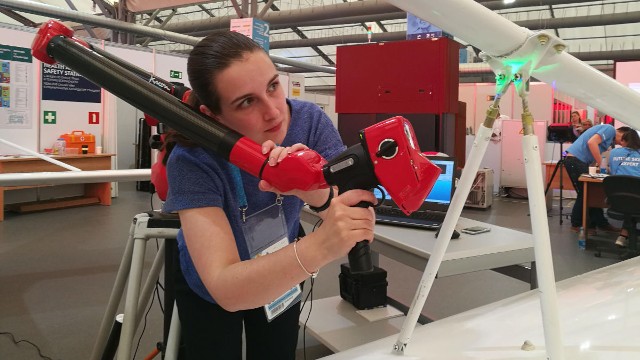Find your passion
Our personality quiz will give you ideas about skills and jobs for you.

More commonly known as 3D printing, Additive Manufacturing is a way of creating objects, such as design prototypes, from three-dimensional models by building up layers of material.
One of the newest and fastest-growing branches of engineering, Additive Manufacturing is more commonly known as 3D printing.
Traditional manufacturing methods, such as milling and turning, cut away material to create the desired end product. In Additive Manufacturing, layers are added in succession to achieve the same result.
Additive Manufacturing can be a more agile way to create strong and complex objects, such as prototypes, for industry and designers, and with less waste.
Working in Addictive Manufacturing requires a new approach to design and manufacturing. This includes a thorough understanding of the equipment for 3D printing and scanning, and the characteristics of the materials used, along with applied mathematics, geometry, and Computer Aided Design and Engineering (CAD and CAE). An understanding and imagination for the potential future uses of this technology is essential.

Korea
Gold

France
Silver

China
Silver
As a worldwide leading manufacturer of machine tools, the integrated technology and automation solutions of DMG MORI cover turning and milling machines, as well as ULTRASONIC, LASERTEC and ADDITIVE MANUFACTURING. For WorldSkills Competitions it provides CNC machines, technical support and offers comprehensive training programmes to competitors.
As a leader in electrification, automation and digitalization, Siemens offers automation hardware and software in sectors from automobiles to steel in more than 200 countries. It seeks to raise skills to industrial levels by providing world class products and knowhow to WorldSkills Competitors and Experts.
INTAMSYS is a global leader in the additive manufacturing industry, providing industrial 3D printers, software, high-performance materials and printing services.
The WorldSkills Occupational Standard specifies the knowledge, understanding and specific skills that underpin international best practice in technical and vocational performance. It should reflect a shared global understanding of what the associated work role(s) or occupation(s) represent for industry and business.
Find out how to start competing in a competition.